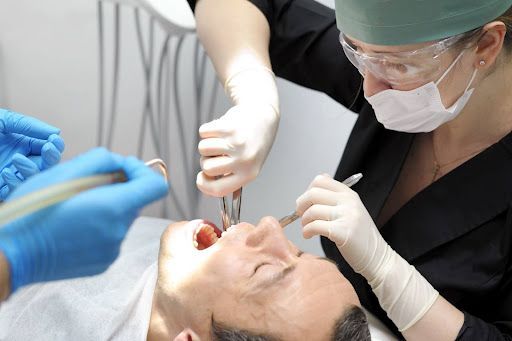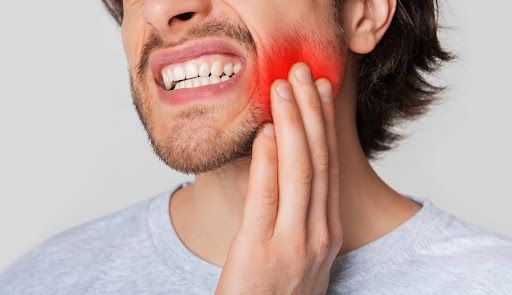Beyond Brushing: Unveiling Oral Health Truths
May 7, 2024
In the realm of oral health care, there exists a wealth of information beyond the simple act of brushing one's teeth. By exploring topics such as proper brushing techniques, the importance of flossing, and the role of diet in oral health, this resource seeks to empower individuals to take proactive steps in caring for their mouths. With clear explanations and practical tips, readers can enhance their oral hygiene routines and promote long-term dental wellness.
The Role of Sugar in Cavities
One of the most widespread myths about oral health is that sugar is the direct cause of cavities. While it's true that sugar plays a role in the formation of cavities, it's not the sole actor in this oral health drama. Cavity formation is a process involving bacteria found in the mouth. These bacteria feed on the sugars we consume, metabolizing them into acids. It's these acids that are the real culprits, as they begin to erode the protective enamel that coats our teeth, leading to the formation of cavities.
The narrative complicates further when we consider our eating habits, particularly the frequency of consuming sugary or starchy foods. It's not just about the amount of sugar we eat but also how often we eat it. Frequent snacking on these types of foods provides a constant food supply for bacteria, thereby increasing the production of harmful acids. This presents a stronger case for why moderation and the timing of sugar intake are crucial considerations for preventing cavities.
In the broader context of diet and oral health, sugar isn't the only dietary villain. Acidic foods and beverages can be just as harmful, if not more so. These include citrus fruits, tomatoes, and sodas, among others, which can directly weaken tooth enamel in a process known as demineralization. Over time, this weakening makes the enamel more susceptible to the destructive byproducts of bacterial metabolism, exacerbating the risk of cavity formation.
To mitigate these risks, it's important to maintain a balanced diet that limits the intake of sugary, starchy, and acidic foods. Incorporating foods that stimulate saliva production, like crisp fruits and vegetables, can help neutralize acids in the mouth and protect tooth enamel. Alongside good dietary practices, maintaining a vigilant oral hygiene routine—brushing twice daily with fluoride toothpaste, flossing, and regular dental check-ups—can play a pivotal role in preventing cavities and ensuring overall oral health.
While sugar is indeed a factor in cavity formation, it's part of a larger ecosystem that includes our dietary habits and the consumption of acidic foods and drinks. Understanding the complexity of how cavities form underscores the importance of comprehensive oral hygiene practices, reinforcing the commitment of Stephens Dentistry to patient education and preventive care in Evanston and the North Shore area.
Rinsing with Water Post-Brushing: A Common Misconception
One practice many of us follow without a second thought is rinsing our mouths with water immediately after brushing. It's almost an automatic reaction, but recent insights into oral health care suggest this habit may be more detrimental than beneficial. The primary reason? It washes away the concentrated fluoride in toothpaste, a key agent in the battle against tooth decay.
Fluoride plays a crucial role in remineralizing teeth, effectively strengthening tooth enamel and making it more resistant to acid attacks. It acts as a shield for our teeth, but when we rinse our mouths immediately after brushing, we inadvertently remove this protective layer before it has the chance to work effectively. Studies have shown that leaving fluoride on the teeth for longer periods can significantly enhance its protective benefits. Thus, rinsing immediately after brushing reduces its efficacy in preventing tooth decay.
Instead of rinsing with water right after brushing, dental professionals recommend simply spitting out the excess toothpaste. This allows the fluoride to remain on the teeth longer, providing ongoing protection. For those who feel uncomfortable with the texture or taste left after brushing, using fluoride mouthwash as a final step in your oral care routine is an effective alternative.
The Fluoride Safety Debate
The topic of fluoride in dental care has been a subject of debate, with some questioning its safety. It's vital to rely on evidence-based information from reputable health organizations to make informed decisions. Extensive research, including studies endorsed by the American Dental Association (ADA) and the World Health Organization (WHO), supports the safety and benefits of fluoride in water and dental products. These organizations advocate for the use of fluoride, highlighting its critical role in preventing tooth decay and promoting oral health on a global scale.
Fluoride, when used appropriately, is not only safe but also a powerful tool in preventing cavities and strengthening teeth. It’s important to rely on scientifically backed information and follow the guidance of dental professionals to ensure that we’re benefiting from fluoride’s protective qualities without misapplication.
Understanding the proper use of fluoride and the importance of not rinsing immediately after brushing are key components of effective oral health care. By dispelling myths and adopting best practices based on reputable research, patients can ensure they're protecting their oral health to the fullest extent.
The Effectiveness of Flossing: Clearing Up the Confusion
In recent years, the effectiveness of flossing has been a topic of much debate. Dental professionals stand firm on its importance in maintaining oral health. Flossing removes plaque and food particles between teeth, areas a toothbrush cannot easily reach. This prevention of tartar build-up, gum disease, and cavities is crucial, as these issues, when left unaddressed, can lead to more significant health problems. Despite mixed messages from various sources, the consensus among dentists remains: regular flossing is an integral component of oral hygiene.
Chewing Gum and Oral Health: A Sticky Subject
Contrary to popular belief, chewing gum can have benefits for your oral health, provided it is the right kind of gum. Sugar-free gums, particularly those with xylitol, can stimulate saliva production, which is beneficial in several ways. Saliva not only helps in cleaning teeth surfaces but also neutralizes the acids produced by bacteria in the mouth, thus preventing tooth decay. Xylitol itself inhibits the growth of Streptococcus mutans, the primary bacteria responsible for cavities. It’s important to understand that while chewing sugar-free gum can be beneficial, it does not replace brushing and flossing.
Can Teeth Whitening Damage Your Enamel?
A common concern among patients considering teeth whitening is whether the process can damage tooth enamel. The good news is that when performed correctly, using products approved by dental professionals, teeth whitening is safe and does not harm the enamel. The key to safe whitening lies in following product instructions carefully and consulting with a dental professional, ensuring any product or procedure chosen is appropriate for your dental health. Teeth whitening can achieve brighter smiles without compromising the strength and integrity of the teeth.
Maintaining oral health involves more than just brushing; it's a multifaceted approach that includes flossing, understanding the benefits of certain sugar-free gums, and safely engaging in teeth whitening, if desired. These practices, backed by scientific research and dental professionals, not only contribute to a healthier mouth but also empower patients with knowledge and the right tools for optimal oral care. Stephens Dentistry is committed to debunking myths and providing evidence-based care, reflecting its value in patient education and preventive measures. By staying informed and adhering to recommended practices, patients can ensure their oral health is in good hands.
Interested in learning more about safeguarding your oral health with evidence-based practices?
At Stephens Dentistry, we're dedicated to providing top-tier dental services rooted in the latest research to ensure your smile stays healthy and bright.







